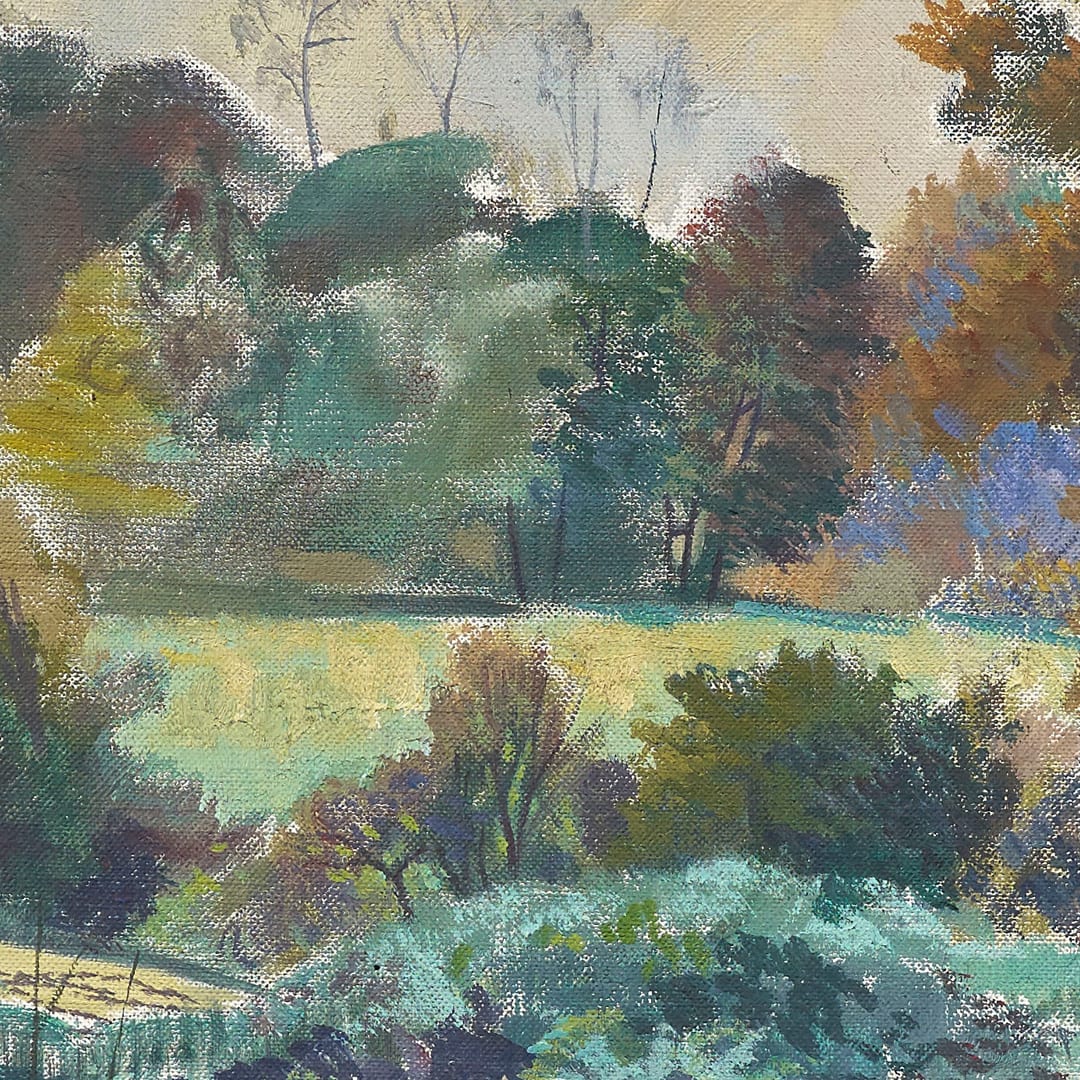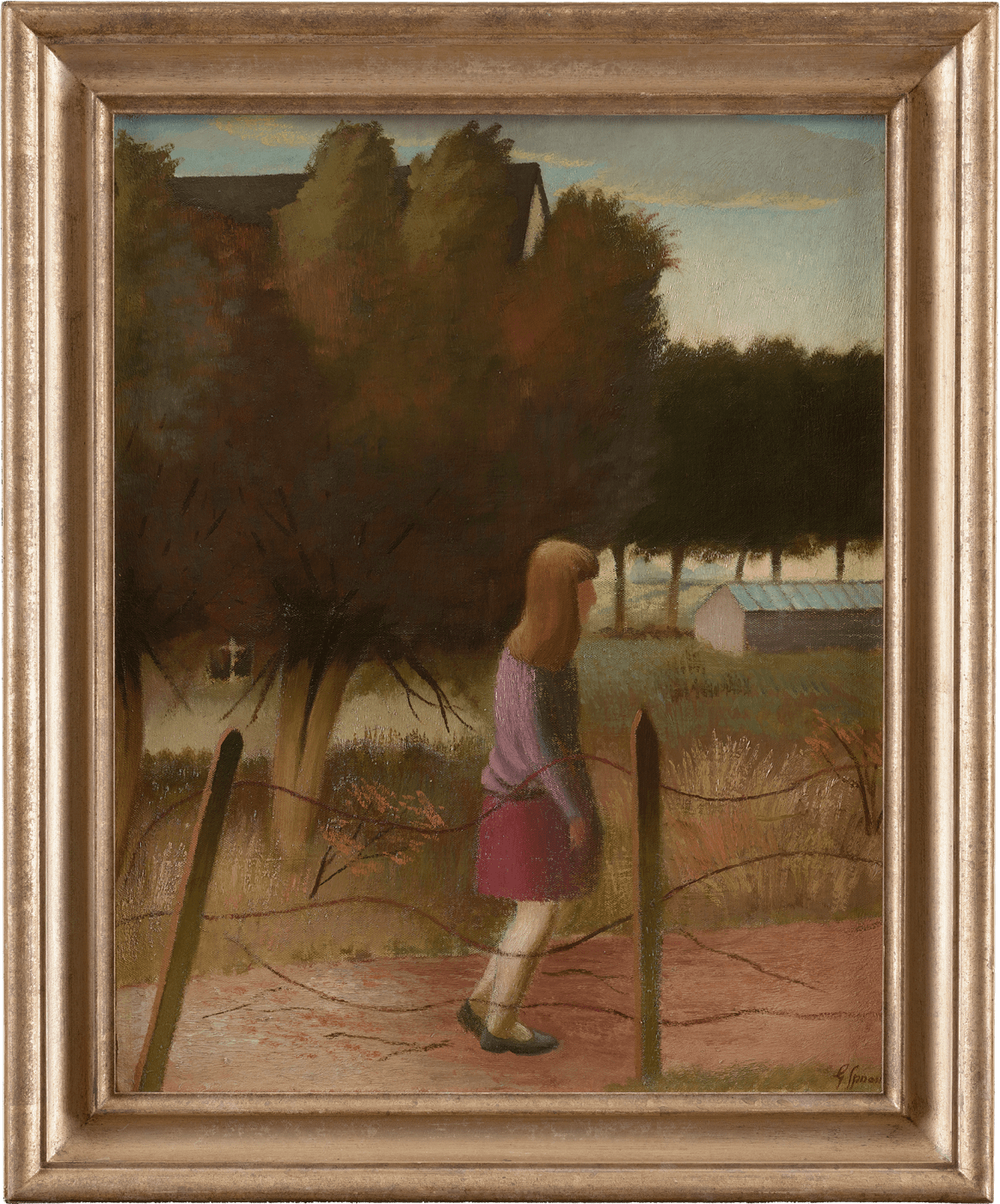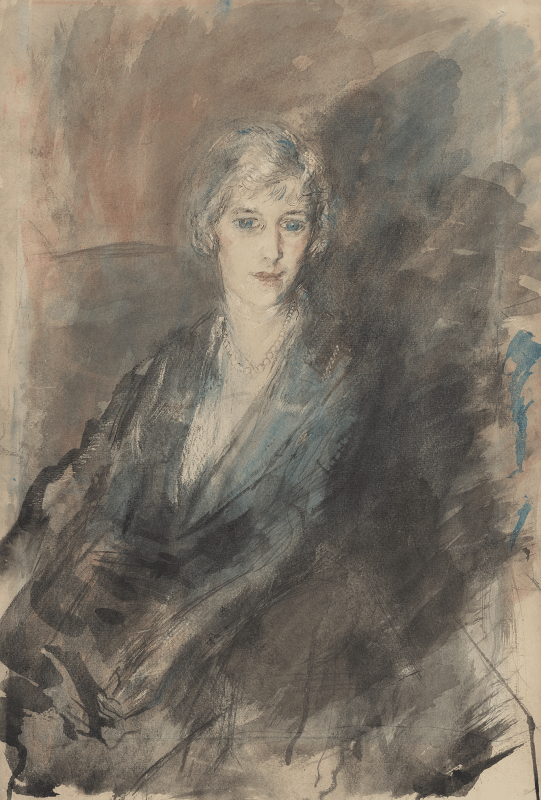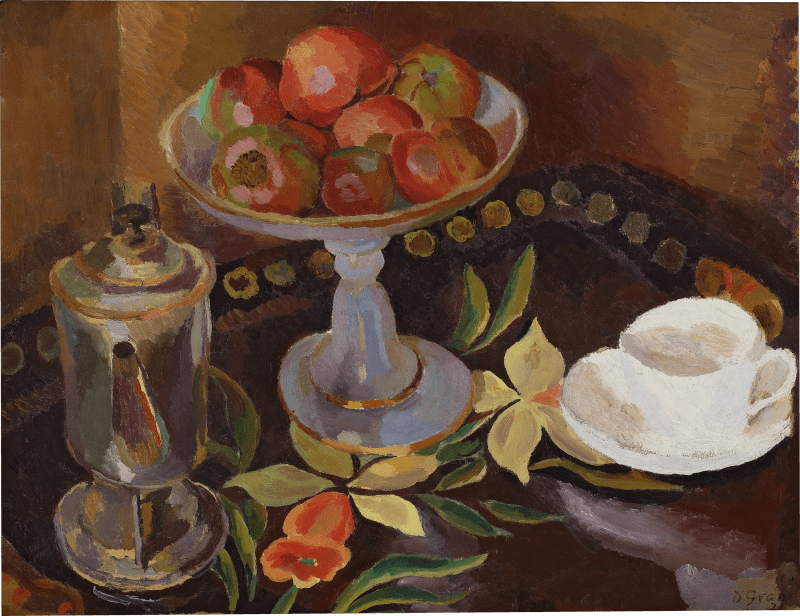Full Biography
Gilbert Spencer was born at Cookham in Berkshire and was the youngest of eleven children of William Spencer, an organist and music teacher, and Anna Caroline Slack. Spencer attended the Camberwell School of Arts and Crafts and the Royal College of Art, before enrolling at the Slade School. Like many artists of this period, Spencer was taught, and was highly influenced by Henry Tonks, the surgeon turned artist, who depicted facially disfigured soldiers of the First World War waiting to undergo reconstructive surgery.
Thirteen months younger than his brother and fellow painter, Sir Stanley Spencer, Gilbert was a talented artist in his own right. Spencer attended the Slade School of Fine Art between 1913-1915. Here, he met Sydney Carline, the Ruskin master of drawing at Oxford, who later invited Spencer to join his staff. At the Slade, Spencer won the life-drawing prize in 1914 and came second in the summer competition with his mural titled The Seven Ages of Man [Hamilton Art Gallery, Canada]. For the duration of the First World War he was part of the Royal Army Medical Corps and was sent to Macedonia. Returning to the Slade in 1918, he met Hilda Carline the following year, who would become his brother’s wife, and her brother Sydney, who invited Spencer to join the teaching staff at Oxford.
Gilbert Spencer was born at Cookham in Berkshire and was the youngest of eleven children of William Spencer, an organist and music teacher, and Anna Caroline Slack. Spencer attended the Camberwell School of Arts and Crafts and the Royal College of Art, before enrolling at the Slade School. Like many artists of this period, Spencer was taught, and was highly influenced by Henry Tonks, the surgeon turned artist, who depicted facially disfigured soldiers of the First World War waiting to undergo reconstructive surgery.
Thirteen months younger than his brother and fellow painter, Sir Stanley Spencer, Gilbert was a talented artist in his own right. Spencer attended the Slade School of Fine Art between 1913-1915. Here, he met Sydney Carline, the Ruskin master of drawing at Oxford, who later invited Spencer to join his staff. At the Slade, Spencer won the life-drawing prize in 1914 and came second in the summer competition with his mural titled The Seven Ages of Man [Hamilton Art Gallery, Canada]. For the duration of the First World War he was part of the Royal Army Medical Corps and was sent to Macedonia. Returning to the Slade in 1918, he met Hilda Carline the following year, who would become his brother’s wife, and her brother Sydney, who invited Spencer to join the teaching staff at Oxford.
In 1922 Spencer started teaching at The Ruskin School of Art, University of Oxford. It was during his time in Oxfordshire that became friends with society hostess and patron of the arts Lady Ottoline Morrell, who helped Spencer to settle in the village of Garsington. Visitors to the old Oxfordshire manor house at Garsington were so welcomed by the owners, Ottoline and Philip Morrell, that some would stay for months on end. Artists, writers, poets and creatives such as W. J. Turner, T. S. Eliot, D.H. Lawrence, Aldous Huxley, William Butler Yeats, Virginia Wolf, Vanessa Bell, Lytton Strachey, Duncan Grant, David Garnett, Dora Carrington, Dorothy Brett, Ethel Sands and Siegfried Sassoon frequented Ottoline’s Oxfordshire home. In her memoir, Morrell described her home as ‘a theatre, where week after week a travelling company would arrive and play their parts ... How much they felt and saw of the beauty of the setting I never knew.’
Like his older brother, Spencer served as an official war artist from 1940 to 1943. Between 1948 and 1950, he was the head of department of painting and drawing at the Glasgow School of Art and in 1950 was elected an associate of the Royal Academy. The year that he was made a Royal Academician, in 1959, both his wife and his brother Stanley tragically died.
Retrospective exhibitions of Spencer’s work took place in 1964 at Reading and 1974 at the Fine Art Society in London. In 1970, at the age of seventy-eight, Gilbert Spencer moved to a farm cottage in Walsham-le-Willows in Suffolk where he spent the remainder of his life. Spencer’s work is in several public collections including the Tate, Victoria and Albert Museum, Imperial War Museum, Manchester City Galleries, Graves Art Gallery in Sheffield and Belfast City Art Gallery.
















